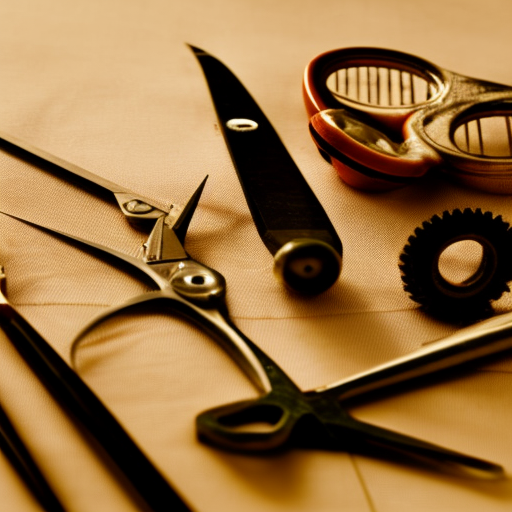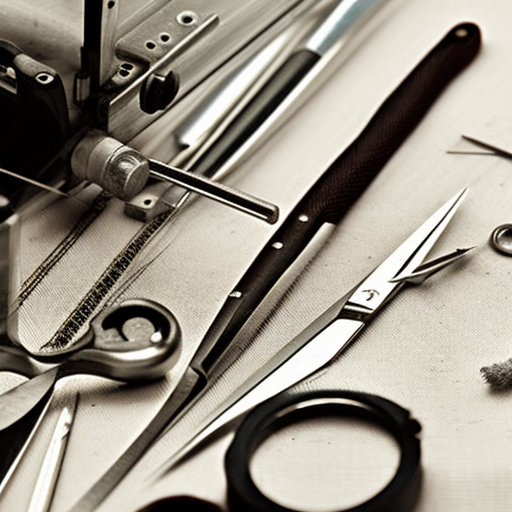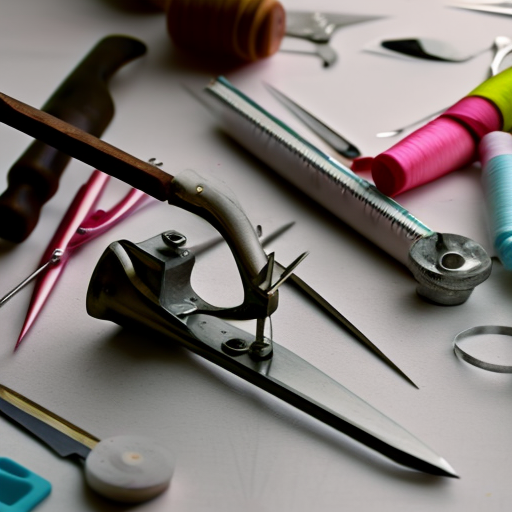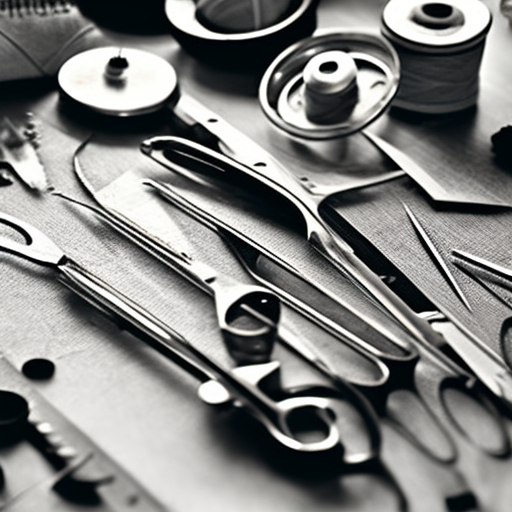Whether you are a seasoned seamstress or just starting out on your sewing journey, having a solid understanding of the different sewing tools is necessary for mastering the craft. However, with so many tools available in the market, it can be overwhelming to know which one to use for each task. That’s where the Sewing Tool Identification Worksheet comes in. This worksheet provides an easy and comprehensive way to learn about the various tools that are used in sewing, and in this article, we will be providing you with the answers to this worksheet.
1. What is the purpose of a sewing machine?
A sewing machine is used for stitching together fabrics and creating a variety of projects like clothing, home décor, and quilts. It works by using a needle and thread to create stitches, making the sewing process faster and more efficient as compared to hand sewing. The sewing machine also allows for different types of stitches, making it a versatile tool in any sewing project.
2. What is the purpose of a sewing needle?
A sewing needle is a long, slender tool with a sharp point and an eye for threading the thread. It is used to pierce through fabric and create stitches in conjunction with a sewing machine or hand sewing. The size and type of needle used depend on the type of fabric and the type of stitch needed for the project.
3. What is the purpose of a bobbin?
A bobbin is a small spool used to hold the bottom thread in a sewing machine. It is placed in the bobbin case, and the thread is pulled through a tensioner and then threaded through the machine’s needle. As the machine creates stitches, the top thread and the bottom thread intertwine, creating a secure stitch.
4. What is the purpose of fabric scissors?
Fabric scissors, also known as dressmaker shears, are large cutting scissors specifically designed for cutting through fabric. They have a bent handle, allowing the blades to be lifted off the cutting surface, making it easier to cut through multiple layers of fabric. Using regular scissors can lead to uneven and jagged cuts, so investing in a pair of fabric scissors is essential for any sewing project.
5. What is the purpose of a seam ripper?
A seam ripper is a small tool with a sharp blade used to remove stitches. It has one pointed end for getting under stitches and a small ball at the other end to protect the fabric from being accidentally cut. This tool comes in handy when correcting mistakes, altering garments, or when unpicking a seam.
6. What is the purpose of a measuring tape?
A measuring tape is used to obtain accurate measurements of fabric and body measurements for sewing projects. It is a flexible tool that can easily wrap around curved areas, providing precise measurements. A measuring tape is an essential tool for any sewing project, and it is also used to create patterns and determine seam allowances.
7. What is the purpose of a pincushion?
A pincushion is a small cushion used to store needles and pins. It acts as a safe place to keep pins and needles while sewing and prevents them from getting lost or causing injuries. Pincushions come in a variety of shapes and sizes and can even be handmade using scrap fabric, making them a fun and practical sewing project.
8. What is the purpose of a thimble?
A thimble is a small, protective covering worn on the finger to push needles through fabric. It is often made of metal, plastic, or leather and helps to protect the finger from getting pricked by the needle. Thimbles come in various sizes to fit different finger sizes, ensuring a comfortable fit and allowing for smooth sewing.
9. What is the purpose of tailor’s chalk?
Tailor’s chalk, also known as dressmaker’s chalk, is a writing instrument used to mark fabric for cutting and sewing. It can easily be brushed or washed off, making it a temporary marking tool. Tailor’s chalk comes in various colors, making it visible on different fabric colors and types.
10. What is the purpose of a sewing gauge?
A sewing gauge, also known as a hem gauge, is a small ruler used to measure small distances. It has a sliding marker that can be set at a specific length, and the gauge is used by sliding the marker along the edge of the fabric to create a consistent hem or seam allowance. This tool is handy when working with small details or when creating precise measurements.
The Sewing Tool Identification Worksheet provides a comprehensive guide to the must-have tools in any sewing project. Knowing and understanding these tools will not only make the sewing process easier but also lead to more professional-looking results. We hope this article has provided you with a better understanding of the various sewing tools and their purposes, allowing you to take on any sewing project with confidence.





Super helpful!#This is a great resource – perfect for anyone who needs to identify their sewing tools quickly and accurately!
Such a helpful worksheet!
Amazing! This worksheet is a must-have for any sewing enthusiast! It’s a great tool that provides easy-to-understand answers which makes identification of sewing tools quick, effortless, and accurate!
Absolutely incredible! This worksheet is an incredibly useful tool for any sewing enthusiast. The answers are easy to understand and make identifying sewing tools effortless and efficient!